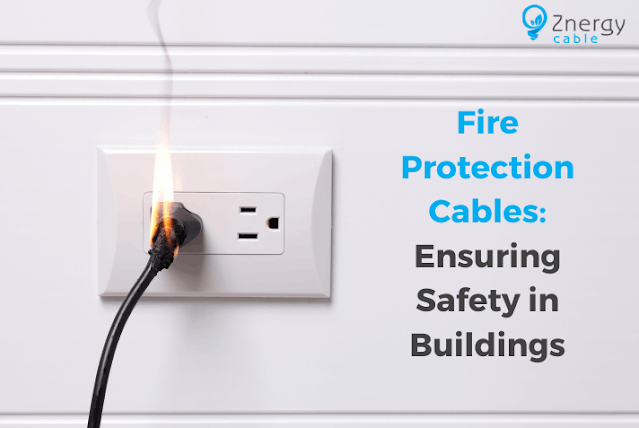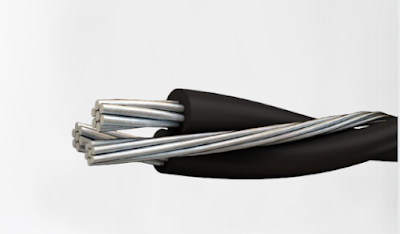Fire Protection Cables: Ensuring Safety in Buildings
In today's society, safeguarding the safety of buildings is critical. Fire prevention is an important part of building safety. Fire protection cables are critical to avoiding fire spread and safeguarding lives and property.
These specialized cables are built to endure intense heat and fire conditions, protecting the integrity of electrical systems in the event of a fire. This article discusses the relevance of fire protection cables and their role in building safety.
Construction and design
Fire protection cables have construction components that improve their fire resistance. They are often built with a fire-resistant insulating material, such as mineral insulation, that does not emit toxic smoke or hazardous gasses when ignited.
The insulation functions as a barrier, keeping the flame from reaching the conductive materials within the cable and ensuring electrical continuity.
Furthermore, fire protection cables frequently include steel armor or metal braiding, which provides mechanical protection while also increasing fire resistance.
Regulatory guidelines
Various regulatory standards and guidelines have been established to ensure the safety and dependability of fire-rated cables.
These standards specify the requirements for these cables' fire resistance, mechanical durability, and electrical performance.
For example, the International Electrotechnical Commission (IEC) and Underwriters Laboratories (UL) have created stringent fire protection cable testing protocols and certifications.
Compliance with these standards ensures that the cables meet the necessary safety requirements and are suitable for building installation.
Updation and advancement
Fire protection cables have seen substantial advances as a result of continual technological advancements.
Innovative materials and manufacturing techniques have resulted in cables with increased fire resistance and performance. Some fire protection cables, for example, now include self-extinguishing properties, which means that once the fire source is removed, the cable stops burning. This feature aids in the prevention of fire spread and reduces damage to the cable itself.
Furthermore, fire protection cables are now available in a broader range of sizes and configurations, enabling more flexible installation options.
They can be customized to fit unique building needs, delivering optimal fire protection in a variety of conditions. Furthermore, innovations in cable design have resulted in enhanced mechanical endurance, making cables more resistant to physical stresses and improving their lifespan.
Application and uses of fire-resistant cable
Commercial area
Fire protection cables are commonly used in commercial buildings such as offices, retail malls, and hotels.
They are put in crucial areas such as emergency exits, stairwells, and fire-rated walls to keep key safety systems such as fire alarms, emergency lighting, and sprinkler systems powered up.
Residential area
Fire protection wires are increasingly being put in residential structures to improve fire safety measures.
They are employed to ensure the integrity of electrical systems during a fire, allowing occupants to evacuate safely in areas such as escape routes, common areas, and fire-resistant walls.
Hospitals
Fire protection cables are vital in ensuring the uninterrupted operation of life-saving equipment such as ventilators, monitors, and critical care systems in healthcare institutions.
These wires are deployed in high-risk places for fire spread, including intensive care units, operating rooms, and emergency exits.
Data centers
Data centers house important computer systems and servers that store and analyze massive amounts of valuable data. Fire protection cables are widely employed in data centers to protect the integrity of these systems in the event of a fire.
They ensure data integrity and reduce the danger of catastrophic data loss by providing a continuous power supply to critical equipment.
Transportation Infrastructure
Fire suppression cables are essential in transportation hubs such as airports, train stations, and subway systems.
They are deployed in tunnels, platforms, and other vital areas to provide power for signaling systems, communication networks, and emergency lights, allowing for safe evacuation and effective emergency response.
Industrial and manufacturing
Manufacturing companies, refineries, and chemical processing plants, for example, frequently operate in hazardous conditions.
In these buildings, fire protection cables are used to ensure the integrity of electrical systems and to give power to vital safety equipment such as fire suppression systems, gas detection systems, and emergency shutdown systems.
Educational institutes
Fire protection cables are put in schools, colleges, and universities to improve fire safety and protect students, faculty, and precious educational resources.
They are utilized in classrooms, laboratories, and assembly halls to keep fire alarms, emergency lighting, and public address systems powered up.
Power generation and distribution
Fire protection cables are used to protect electrical infrastructure in power generation plants, substations, and distribution networks.
They ensure the safety of people and prevent extensive power outages by supplying stable power to control systems, emergency shutdown systems, and fire detection and suppression equipment.
Conclusion
Fire protection cables are critical components for maintaining building safety during a fire emergency. These cables are crucial in preserving power supply to vital safety systems, allowing residents to safely escape, and assisting emergency response activities.
Fire protection cables are more reliable and effective as a result of regulatory compliance and developments in cable technology. As buildings evolve, it is critical to prioritize the installation of fire protection cables in order to reduce the risk of fire-related incidents and protect lives and property, and fire-rated cable manufacturers play a vital role in this.
At Znergy Cable, we are a global electrical cable manufacturer and supplier in Australia. We design and manufacture electrical cables in Australia.



Comments
Post a Comment